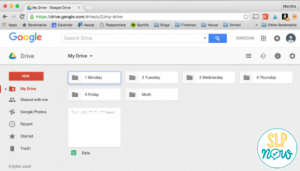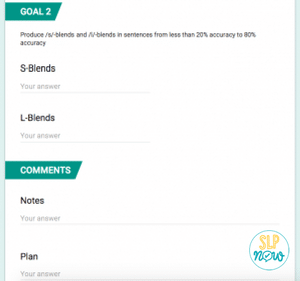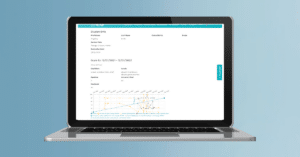Every speech-language pathologist (SLP) I’ve talked to feels like they’re drowning in paperwork, trying to keep their student records organized (while also respecting student privacy).
When I started my first job as a school-based speech-language pathologist, I was so excited to dive into therapy with my very own caseload, but I was totally unprepared for the amount of paperwork! I tried lots of systems and tools (iPhone apps, spreadsheets, individual data sheets, daily data sheets), but none of them felt like they fit quite right for my tracking needs.
I’m thrilled to share that I FINALLY cobbled together a system that works to keep all my student records organized and private. What’s the crux of my system? Google Forms!
Update: I was loving many features of Google Drive for data (especially the graphs!), but it ended up being A LOT of work to maintain. I did love taking data digitally! Here’s a peek at what I do now!
Here is a quick overview tutorial of how I set up my data sheets. I’ve also included a written description with screenshots below.
I store each student’s form in a folder, based on which day(s) I see them. The “Multi” folder is for students that I see multiple days a week. You could also sort by teacher or grade or just keep all students in one folder!

I keep track of when I saw the student and the type of session. (I use “Other” to document a missed session due to student absence, a school activity, meetings, etc.)

I also enter any data taken during the session. If I didn’t target a specific goal, then I just leave it blank. I also like having space to enter any notes and make note of anything specific I want to do next week.

The data then gets stored in a Google Sheet. (When you click on the data tab when you are looking at your form, you have the option to create a spreadsheet.)

And you can set it up to make beautiful graphs! (Parents, students, teachers, and administrators love this part.) This example includes percentages, but I especially love using rating scales to monitor progress. Schoolhouse Talk has an amazing product to help get you started. Check it out here.

Advantages of Using Google Forms for Tracking Speech Therapy Data
1. My notes are more detailed and take less time, because I can type much faster than I write. (I also have a few more productivity hacks to make narrative data even easier, but those are for another blog post.)
2. Everything is stored in one place. No more lugging around data binders!
3. It is easy to involve my students in the data taking process. They can easily enter their progress in the form. I made QR codes so that we can scan the code and pull up their form, which they love!
4. It is easy to review student progress. I set up the Google Sheets to create graphs using the data. These visuals are great to share with parents and students. I’m hoping they’ll make progress reports a breeze.
5. The Google Forms could be great for collaboration. I haven’t done this yet, but I could share the form with a teacher or a therapist.
6. You can easily customize each student’s form. Makes for easy and efficient progress monitoring.
7. It helps reduce clutter in my speech room. I still have a lot of papers in my room, but this really cuts down on the amount of papers I have floating around throughout the day.
Disadvantages of Using Google Forms for Tracking Speech Therapy Data
1. Glitches. There haven’t been many, but they do come up from time to time. They could all be fixed by re-opening the browser.
2. There is some initial setup time. It took me a few hours to set up all the forms, enter students’ goals, set up the graphs, etc.
3. Some people are worried about confidentiality. I use my school Google account and set up the best possible security settings. I only use initials in the forms and never include any identifiable information.
4. Internet connectivity. If the internet is down, then you’re out of luck!
I would love to hear what you think! Do you take data electronically? What is your favorite “system?”
Not sure which data system is best for you? Check out this blog post (including a free quiz!) to help you narrow down the options!






Leave a Reply